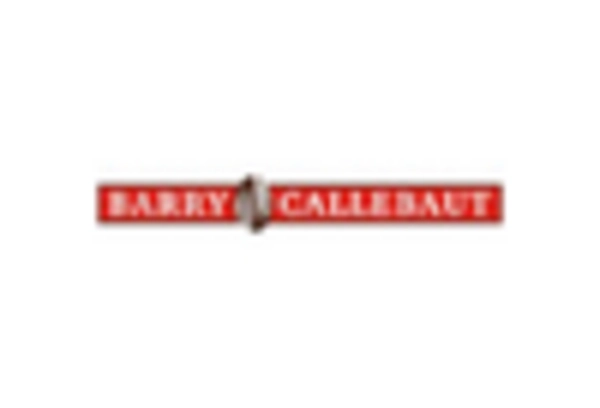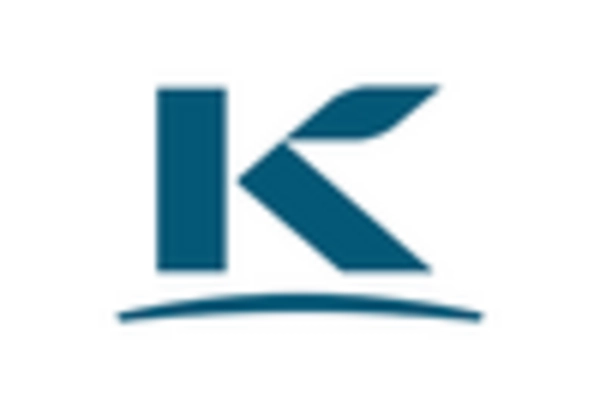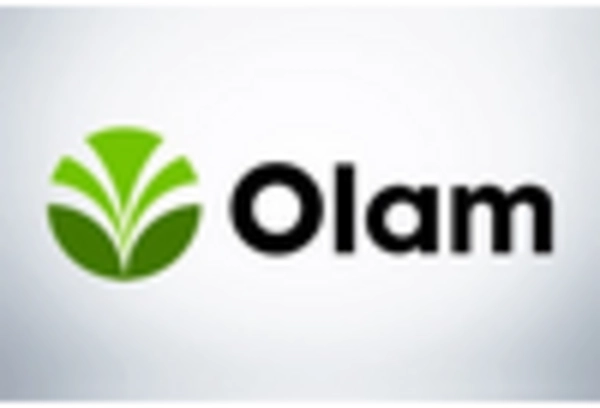Expansion of E-commerce Channels
The rapid expansion of e-commerce channels is reshaping the food inclusions market in North America. With the increasing prevalence of online shopping, consumers are seeking convenient access to a wide variety of food inclusions. Market data suggests that online grocery sales are projected to grow by 20% annually, creating new opportunities for brands to reach consumers directly. This shift is prompting manufacturers to enhance their online presence and optimize their distribution strategies. As e-commerce platforms become a primary channel for purchasing food inclusions, companies that effectively leverage digital marketing and logistics are likely to gain a competitive edge, ultimately driving growth in the food inclusions market.
Increased Focus on Sustainability
Sustainability is becoming a pivotal driver in the food inclusions market in North America. Consumers are increasingly concerned about the environmental impact of their food choices, prompting manufacturers to adopt sustainable sourcing and production practices. This trend is reflected in Market Research Future, which indicates that 60% of consumers are willing to pay a premium for sustainably sourced ingredients. As a result, food inclusions such as organic nuts and sustainably harvested fruits are gaining traction. Companies that prioritize sustainability in their supply chains are likely to enhance their brand reputation and appeal to environmentally conscious consumers, thereby fostering loyalty and driving sales in the food inclusions market.
Growing Demand for Healthier Snacks
The food inclusions market in North America is experiencing a notable shift towards healthier snack options. Consumers are increasingly seeking products that align with their health-conscious lifestyles, leading to a surge in demand for inclusions such as nuts, seeds, and dried fruits. This trend is reflected in market data, which indicates that the healthy snack segment is projected to grow at a CAGR of approximately 8% from 2025 to 2030. As manufacturers respond to this demand, the food inclusions market is likely to see an expansion in the variety of health-oriented products, catering to diverse dietary preferences and restrictions. This growing inclination towards nutritious snacks is not only reshaping product formulations but also influencing marketing strategies, as brands emphasize the health benefits of their food inclusions.
Rising Popularity of Plant-Based Products
The increasing popularity of plant-based diets is driving growth in the food inclusions market across North America. As more consumers adopt vegetarian and vegan lifestyles, there is a heightened demand for plant-based inclusions such as legumes, grains, and plant-derived proteins. This shift is supported by market data indicating that the plant-based food sector is expected to reach a valuation of $74 billion by 2027. Consequently, food manufacturers are exploring innovative ways to incorporate these plant-based inclusions into their products, thereby enhancing nutritional value and catering to the evolving preferences of health-conscious consumers. This trend not only influences product development but also shapes marketing narratives, as brands highlight the sustainability and health benefits of plant-based inclusions.
Innovation in Food Processing Technologies
Advancements in food processing technologies are significantly impacting the food inclusions market in North America. Innovative techniques such as freeze-drying, extrusion, and encapsulation are enhancing the quality and functionality of food inclusions. These technologies allow for better preservation of nutrients and flavors, which is crucial for meeting consumer expectations. Market analysis suggests that the adoption of these technologies could lead to a 15% increase in the efficiency of production processes by 2027. As manufacturers invest in state-of-the-art equipment and methods, the food inclusions market is likely to witness a diversification of product offerings, including more complex flavor profiles and textures that appeal to a broader audience.


















Leave a Comment